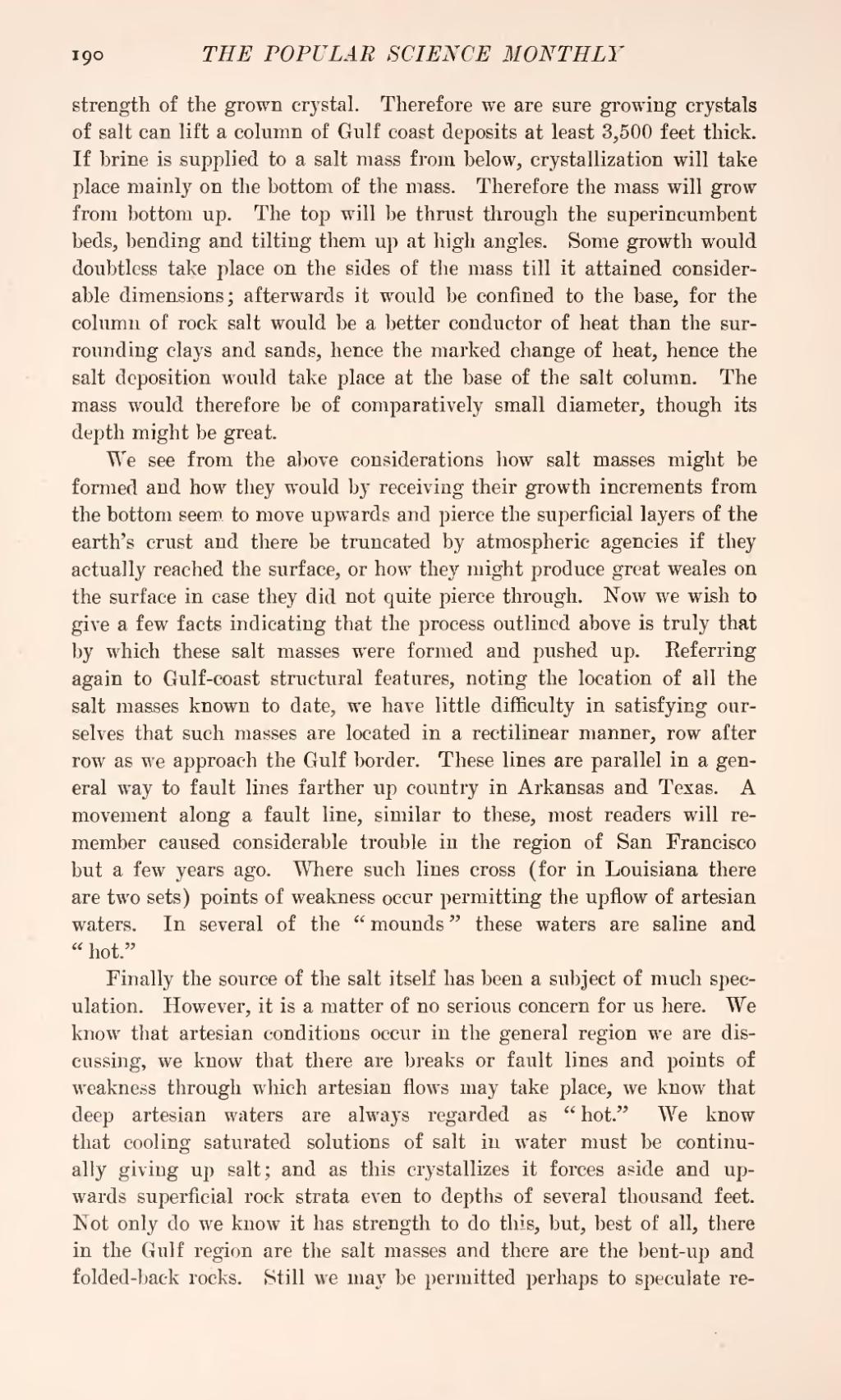strength of the grown crystal. Therefore we are sure growing crystals of salt can lift a column of Gulf coast deposits at least 3,500 feet thick. If brine is supplied to a salt mass from below, crystallization will take place mainly on the bottom of the mass. Therefore the mass will grow from bottom up. The top will be thrust through the superincumbent beds, bending and tilting them up at high angles. Some growth would doubtless take place on the sides of the mass till it attained considerable dimensions; afterwards it would be confined to the base, for the column of rock salt would be a better conductor of heat than the surrounding clays and sands, hence the marked change of heat, hence the salt deposition would take place at the base of the salt column. The mass would therefore be of comparatively small diameter, though its depth might be great.
We see from the above considerations how salt masses might be formed and how they would by receiving their growth increments from the bottom seem, to move upwards and pierce the superficial layers of the earth's crust and there be truncated by atmospheric agencies if they actually reached the surface, or how they might produce great weales on the surface in case they did not quite pierce through. Now we wish to give a few facts indicating that the process outlined above is truly that by which these salt masses were formed and pushed up. Referring again to Gulf-coast structural features, noting the location of all the salt masses known to date, we have little difficulty in satisfying ourselves that such masses are located in a rectilinear manner, row after row as we approach the Gulf border. These lines are parallel in a general way to fault lines farther up country in Arkansas and Texas. A movement along a fault line, similar to these, most readers will remember caused considerable trouble in the region of San Francisco but a few years ago. Where such lines cross (for in Louisiana there are two sets) points of weakness occur permitting the upflow of artesian waters. In several of the " mounds " these waters are saline and " hot."
Finally the source of the salt itself has been a subject of much speculation. However, it is a matter of no serious concern for us here. We know that artesian conditions occur in the general region we are discussing, we know that there are breaks or fault lines and points of weakness through which artesian flows may take place, we know that deep artesian waters are always regarded as " hot." We know that cooling saturated solutions of salt in water must be continually giving up salt; and as this crystallizes it forces aside and upwards superficial rock strata even to depths of several thousand feet. Not only do we know it has strength to do this, but, best of all, there in the Gulf region are the salt masses and there are the bent-up and folded-back rocks. Still we may be permitted perhaps to speculate re-

